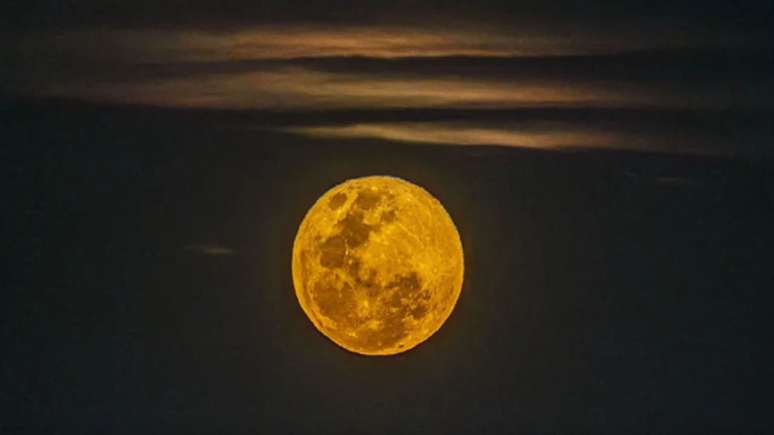The phenomenon occurs when the full moon occurs near perigee and is closest to Earth
This Friday (15), tonight, the last supermoon of 2024 will take place, the satellite will be approximately 361,867 kilometers (km) from Earth. To give you an idea, on average the Moon is about 384,400 km from our planet. According to the National Observatory (ON), the exact moment of the full moon varies depending on the local time zone, but in Brasilia time the exact moment of the full moon varies depending on the local time zone. the peak of the phenomenon occurred precisely at 6.28 pm.
Supermoon: find out more about the phenomenon
A full moon occurs when the Sun and Moon are aligned on opposite sides of the Earth, illuminating 100% of the Moon’s visible side. Observers may notice a brighter-than-normal Moon. The phenomenon will be visible in all regions of the world, as long as the weather is favorable, without rain or cloudy nights.
The astronomer of the National Observatory says so Josina Nascimentoof the Science Communication and Dissemination Division, the term supermoon has no scientific basis. In an interview with Agência Brasil he explains that the term was coined by a named astrologer Riccardo Nollewhich stated that the term “super” would apply to a full Moon that occurred when the Moon was at perigee or up to 90% near it. However, the reason for this 90% choice is unclear. Because it is a nonscientific term, there are disagreements among astronomical institutions regarding the distance from the Moon to the Earth that defines a supermoon. What is known is that it became popular and the scientific community began to adopt it. In this way, they could bring science closer to people through accessible language.
According to the expert, the supermoon can occur during the full or new phase, near the perigee (the point where it is closest to the Earth), and appears one to six times a year. However, the distance between the Earth and the Moon can vary, since the lunar orbit is elliptical and not circular. Finally, those with favorable weather conditions will be able to appreciate a noticeably larger and much brighter Moon.
Source: Terra
Ben Stock is a lifestyle journalist and author at Gossipify. He writes about topics such as health, wellness, travel, food and home decor. He provides practical advice and inspiration to improve well-being, keeps readers up to date with latest lifestyle news and trends, known for his engaging writing style, in-depth analysis and unique perspectives.









